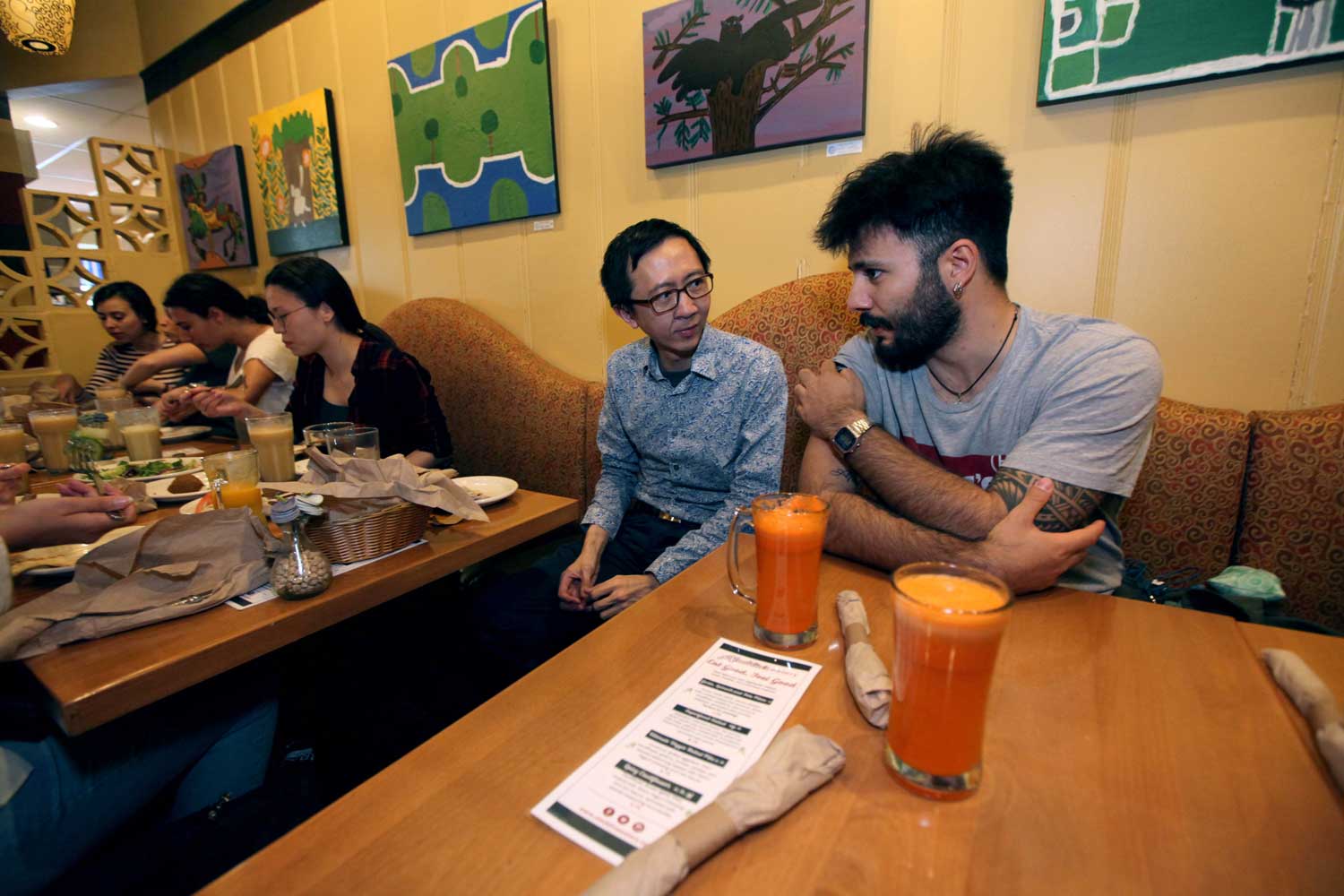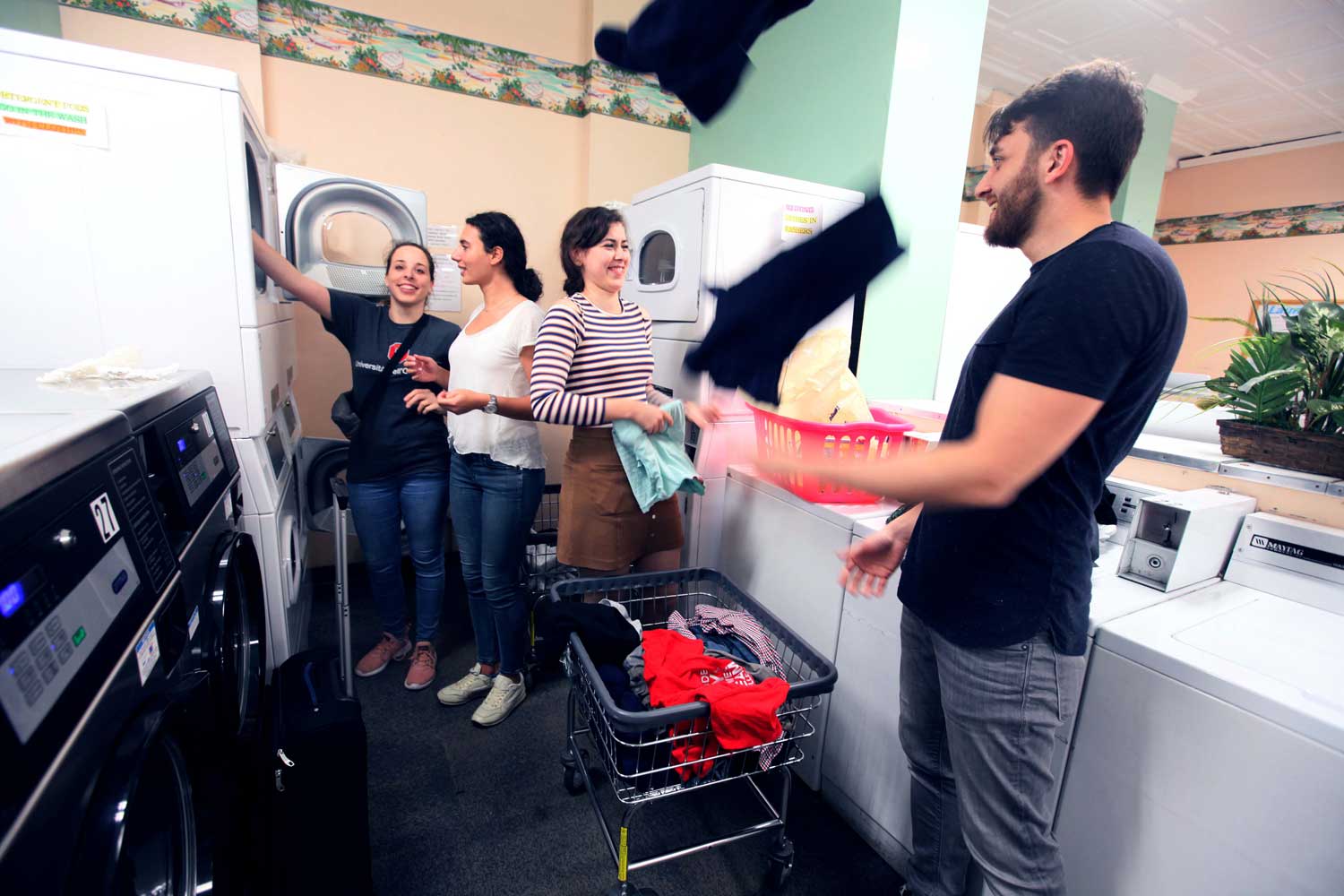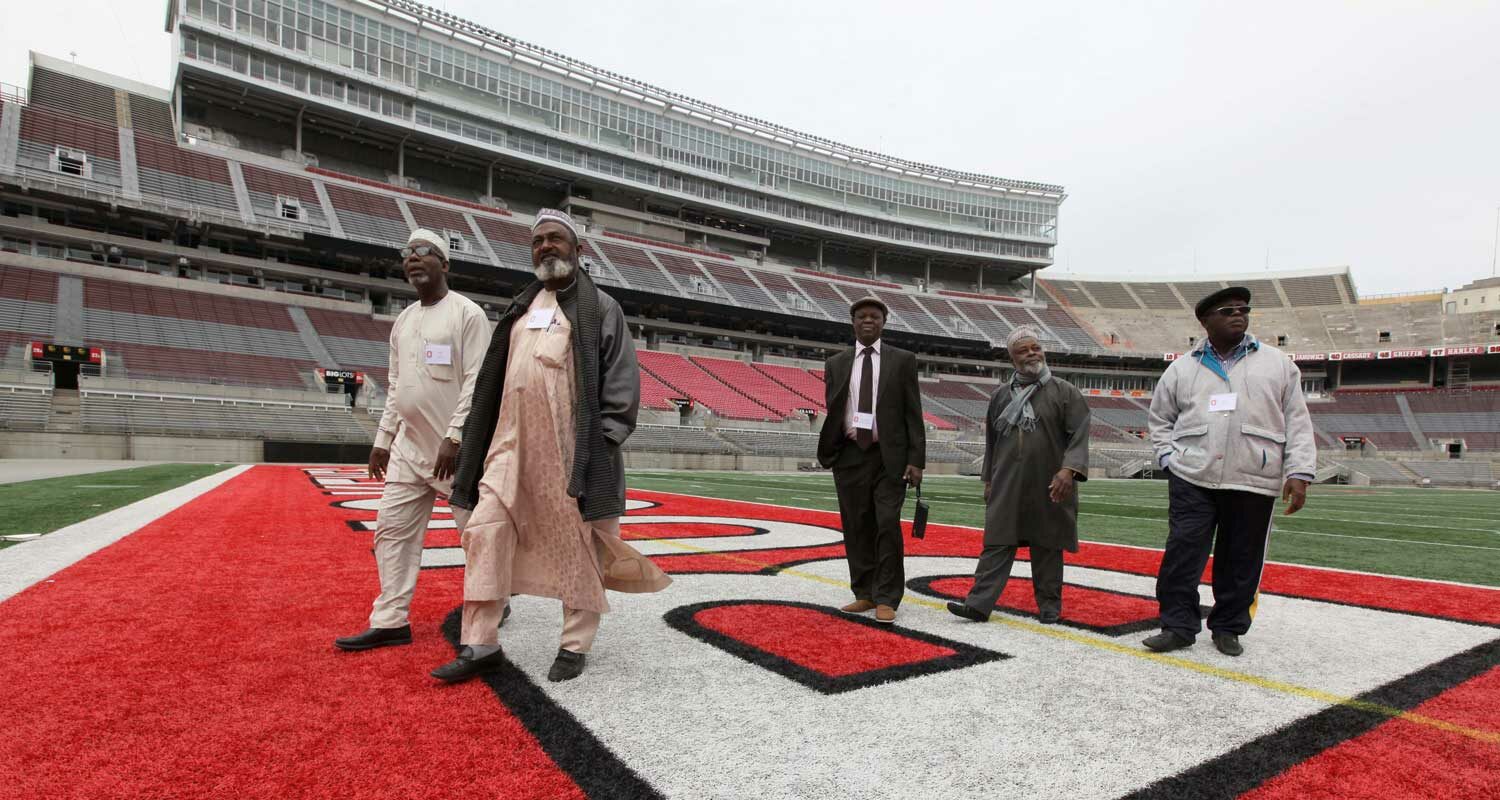Sometimes, a change in perspective is all a student, researcher, teacher, human needs
Ten years ago, researchers studying group dynamics gave tasks to randomly assembled teams. They found that if only a few members in the group spoke, the collective intelligence of the group declined. The smartest, most nimble teams were ones where every voice was heard an equal amount of time.
Collective wisdom, or what some call cognitive diversity, is stronger than individual knowledge. It’s a concept that experts now apply to economics, teaching diverse populations, higher education and scientific research. It’s also the basis of the college’s Global Engagement Initiative.
“Our fundamental belief is that engaging with people from different cultures and different experiences brings us perspectives that we have not tapped yet,” said Dean Don Pope-Davis. “It provides an opportunity to solve problems together for the greater good.”
Consider Barış Şahin, a German Fulbright student with symbols of his Alevi faith tattooed on his biceps. His Kurdish father fled racial and religious persecution in Turkey.
Though born in Germany, Şahin calls himself a hybrid. “I want to be German but the German society does not accept that. I want to be Kurdish or Turkish, but they don’t accept that. So I am in the middle.”
He came to Ohio State in March with 19 other Fulbright students — all either children of immigrants or immigrants themselves — to study multicultural education, diversity, equity and inclusion, all signature instruction at the college.
The students brought their unique perspectives to the college — they all are acutely aware of the struggles hindering children displaced by poverty, war and discrimination, children who feel marginalized and incapable of scaling the hurdles before them. All of them want to bring a new face of teaching to German schools — giving minority children critical role models that research shows are so necessary for success.
America faces those challenges, too.
In Columbus City Schools, for example, one in six students is an English language learner. Others, like Şahin, feel disconnected because they’re taught by teachers who do not look like them or share their experience: 54% of Columbus students are black, though only 18% of the district’s teachers are. The state average is just 4%.
Diversity, equity and inclusion are central to the college’s values. The work faculty and staff are doing locally and nationally confronts perfectly the challenges facing world societies. “It’s intentional and strategic on the part of Fulbright Germany to send them to Ohio State to enhance their teacher education in terms of equity, diversity and inclusion,” said Francis Troyan, associate professor of foreign, second and multilingual language education who led the seminar. “They want them to lead and transform education in Germany.”
[intergeo id=”QNzUjM”][/intergeo]
Borrowing ‘other people’s wisdom’
Taking the best global innovations and practices and melding them with one’s own culture — “glocalization” — is a longtime practice in business, but it has applications in all the college’s areas of focus.
“Ever more, our communities are at once local and global,” said Noelle Arnold, associate dean of Equity, Diversity and Global Engagement, “a vibrant mix of cultures and experiences that present significant changes, not just for education, but for the well-being of families and communities.”
Developing deeper understanding and cross-cultural collaboration is critical to the success of the college and the people we serve.
“Our students and faculty in the 21st century are talking across cultures and communities that are different than what exist here in Columbus,” Pope-Davis said.
EHE students traverse the globe, studying education systems in Salvador, Brazil, and tourism in Indonesia. The dean has met with diplomats and university partners in Tokyo and in Jinhua, China. Faculty and doctoral students have conducted research in Ethiopia, Kenya, Japan, Mexico, the UK and beyond. All these studies reinforce work the college is doing in Columbus and throughout Ohio.
The world also comes to the college. Nearly 100 English teachers from Mexico improved their instruction. Faculty from Japan’s Tsukuba University collaborate with special education and sports sciences experts on research and education abroad courses.
To put the college on the global stage, the staff meets regularly with the U.S. Department of State and attachés in foreign embassies.
“They let us know what’s going on in those countries, and what will be a priority to our partner universities,” said Kerry Dixon, the college’s executive director for international and global engagement. For example, the number of Japanese students coming to the United States to study is declining; both governments are looking to change that pattern. “We have our finger on the pulse. They’re brokering that information for us,” Dixon said.

Collaboration also spans the university and the community. Last year two groups, the International Group of Education Transfer and the Institute for International Training and Development, approached Professor Chris Igodan about conducting a seminar for Nigerian university leaders. So the professor of agriculture and international development reached out to Education and Human Ecology and its higher education experts.
The Nigerian government sent 30 of its university presidents, board of trustees and other administrators to Columbus to explore higher education administration in the United States.
The group spent five days hearing about American academic models, strategic planning and research from experts including Bruce A. McPheron, Ohio State’s executive vice president and provost. The vice chancellor of Ibrahim Badamasi Babangida University met with disability experts, seeking solutions for students at his Nigerian university.
Wearing traditional African tunics and kufi hats, the administrators toured Ohio Stadium, the largest any of them had seen. Walking past a sea of empty seats, the pro-chancellor of the University of Ilorin spoke about improving higher education in Nigeria, an emerging African economy that struggles with high unemployment.
“Our structure is developing, and when we see establishments like Ohio State that have already walked the track, we try to find out from their experiences,” Abdullah Jibril Oyekan said. “As they say, you use other people’s wisdom to make your wisdom.”

English as a Second Language program.
Enriching experiences with cross-exchange
When 28 education students from Zhejiang Normal University arrived at John Glenn International Airport in late December, they brought faux-fur ruffed parkas, overstuffed suitcases and an
insatiable curiosity about American culture.
The exchange also brought a $250,000 grant from their university, awarded to Lin Ding, associate professor of science education, to instruct the students for four months. STEM Education, the American Language Program and the Center on Education and Training for Employment — all college programs — partnered to teach the students research methods and English.
The group toured area schools, the Ohio State House and Franklin Park Conservatory. They shopped trendy retailers and dined in area restaurants, all part of their cultural training.
Education has become one of America’s most vital commodities. More than 1 million international students generated $42.4 billion in revenue for U.S. colleges and universities in 2017, according to the U.S. Bureau of Economic Analysis. Ohio State ranked in the top 25 that year for its number of international students. The college aims to drive that engagement up.
To do that, Pope-Davis and a college delegation went to Zhejiang Normal University to secure an extended grant to broaden last winter’s exchange to five years.
The agreement will allow research collaborations and cross-exchange of Ohio State students to China.
Putting Ohio State students into their classrooms, and theirs into ours, adds richness to the student body and deepens everyone’s comfort among different cultures — imperative for thriving in an ever-global economy.

Looking in with outside eyes
Over shawarmas in a north-Columbus restaurant, the German Fulbright students praised the open and fluid nature of teaching they had seen in American schools, and that children are allowed to translanguage, or speak their native tongue in class.
But the inequity — not present in German education — shocked them.
“Two kids were ‘outsiders’ and bonded because their moms are both sick — that’s what they call it,” Jessica Hupka said of children in one Columbus City school. “Then one of their moms died from an overdose, and that’s when they were really bonding.”
In a school a few zip codes away, she said, “Everything seemed so perfect. Everybody was happy.”
When the students met with Dean Pope-Davis, they asked about the disparity they had seen. He explained the continued impact of educational segregation in America.
“Overwhelming evidence shows that communities are better if they are diverse,” he said. “The big divide here, besides race, is socio-economics. The intersection of race and class is a very real concept that we struggle with.”
The Fulbright students returned to Germany the next day, back to solve problems that in many ways parallel American educational challenges.
But, for the college, their observations about the United States served the purpose that Pope-Davis had hoped they ultimately would: They provided a new lens through which Americans can view themselves.

